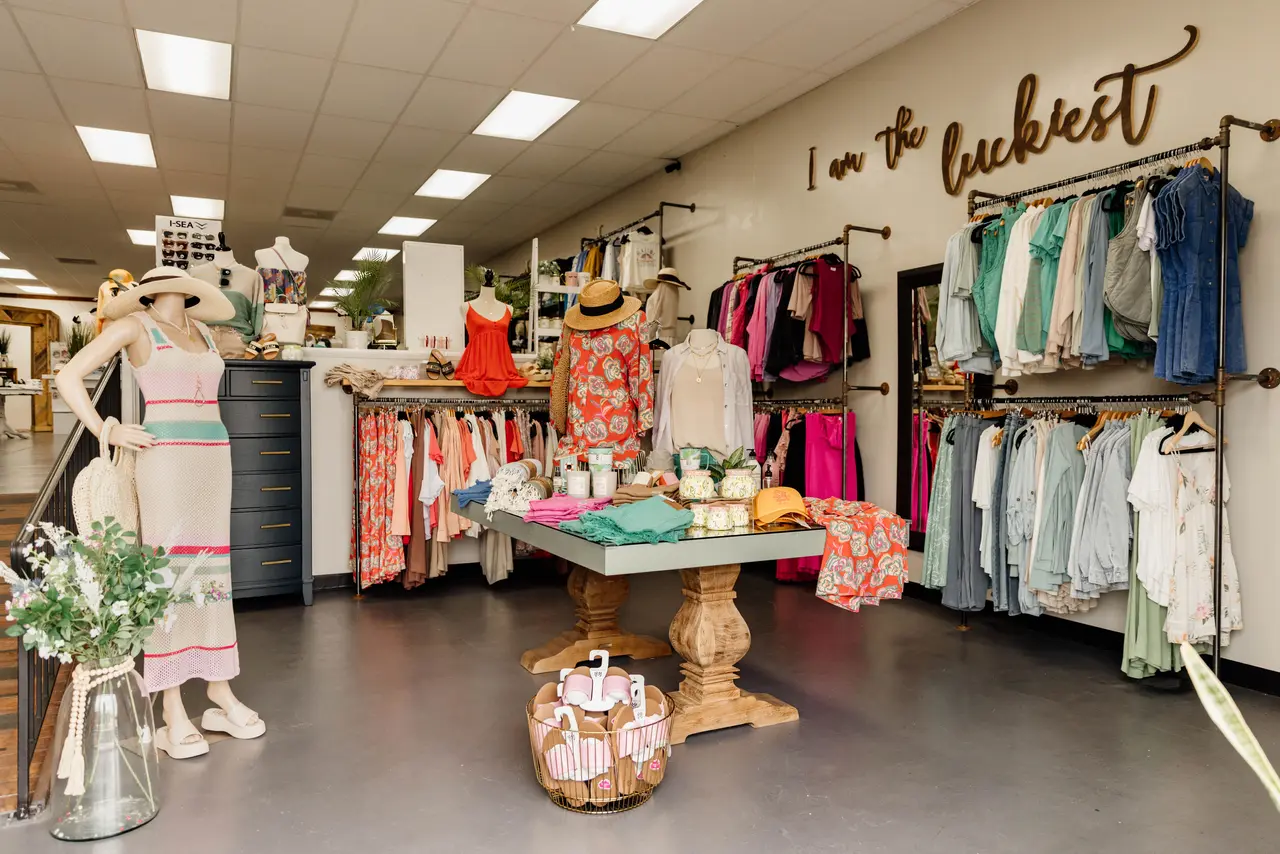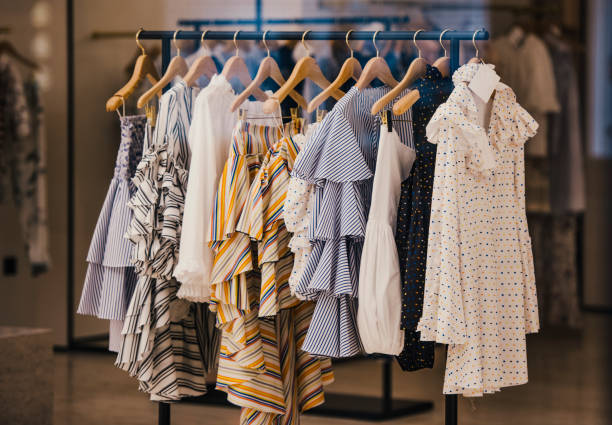Leading 10 Essential Item from Your Favorite Boutique Fashion Shops
Leading 10 Essential Item from Your Favorite Boutique Fashion Shops
Blog Article
Sustainable Fashion: How Eco-Friendly Clothing Is Shaping the Future of Style
As the garment industry encounters boosting scrutiny over its ecological impact, the rise of lasting fashion uses an encouraging choice that straightens style with environmental duty. Employing ingenious materials such as plant-based fabrics and recycled fibers, together with innovative techniques like electronic and 3D printing, developers are redefining what it implies to be classy in the contemporary age. Simultaneously, the growing appeal of upcycling and thrift culture is promoting a shift towards a round economy. Yet, just how does this movement absolutely affect the future trajectory of fashion, and what challenges exist ahead in its widespread fostering?
Ingenious Lasting Materials
As the style market grapples with its ecological impact, ingenious lasting materials have arised as a vital remedy for decreasing eco-friendly impacts. These materials not only minimize dependency on fossil gas but also reduce dangerous chemical use and water intake.
In addition to plant-based materials, developments in biofabrication have caused the growth of lab-grown fabrics. Mycelium natural leather, originated from mushroom origins, offers a versatile and naturally degradable choice to animal natural leather. Its manufacturing causes substantially reduced carbon exhausts and water use, making it a much more sustainable choice for stylist seeking to straighten with environmentally friendly practices.
Recycled materials are also obtaining grip, with polyester made from recycled plastic containers representing a significant advancement. This innovation not just draws away plastic waste from garbage dumps and oceans yet additionally lowers power usage compared to producing virgin polyester. With each other, these products highlight the potential for an extra sustainable fashion business, leading the way for eco aware style and production.
Eco-Conscious Production
Building on the innovations in lasting materials, the style market is also re-evaluating its production procedures to even more reduce environmental influence. Key techniques include reducing water consumption, decreasing carbon emissions, and getting rid of hazardous chemicals. By embracing closed-loop systems, manufacturers intend to recycle water and power efficiently, dramatically decreasing waste. The assimilation of sustainable power sources, such as solar and wind power, right into production centers even more stops reliance on nonrenewable fuel sources.
One more important element is the reduction of harmful chemicals traditionally utilized in coloring and completing fabrics. Eco-conscious manufacturers are shifting towards plant-based dyes and waterless dyeing technologies, which not only safeguard local environments however also enhance worker safety. Advancements like digital printing minimize textile waste and power consumption, offering a cleaner option to typical approaches.
In addition, openness and traceability have actually ended up being extremely important. With the improvement of blockchain modern technology, firms can now give thorough insights right into their supply chains, ensuring ecologically friendly and moral practices at each step. This transparency develops consumer count on and encourages brands to maintain high sustainability criteria. As the need for eco-conscious items grows, makers are urged to introduce, making sure that the future of fashion is both sustainable and fashionable.
The Rise of Upcycling
Upcycling, a transformative method in sustainable style, entails artistically repurposing discarded materials into new, premium products. This innovative method not only decreases waste but also decreases the demand for basic materials, consequently lessening the environmental effect of clothing production. By reimagining and reconstructing existing products, developers and style brand names have the ability to infuse creativity into their collections while advertising ecological duty.

Furthermore, the upcycling motion has actually encouraged small companies and independent developers, who typically lead additional hints in advancement as a result of their agility and imagination. By maximizing the plentiful accessibility of unused materials, these entities add to a round economic situation, demonstrating that fashion can be both stylish and sustainable. Via upcycling, the sector takes considerable strides towards an extra mindful and accountable future.
Thrift Society's Impact
The burgeoning thrift culture substantially reshapes the landscape of sustainable fashion, emphasizing the significance of mindful intake. This social change encourages customers to accept secondhand clothes, therefore minimizing the demand for new garment manufacturing and reducing environmental influence. Second hand shopping not just prolongs the lifecycle of clothing but also discover this decreases the carbon impact connected with production, carrying, and dealing with apparel.
A key facet of second hand culture is its democratization of style. By offering a wide range of styles from different eras at cost effective rates, second hand stores make fashion available to a broader audience. This ease of access cultivates a sense of individuality and imagination, as consumers mix and match special pieces to curate personalized wardrobes without adding to the quick style cycle.
Moreover, second hand culture advertises circularity in vogue, lining up with the concepts of a round economic situation. By recirculating garments, the cycle of waste is interfered with, and resources are conserved. This practice sustains a change from a direct "take-make-dispose" design to a much more lasting structure. As even more designers and consumers accept thrift culture, the style market is urged to adjust, integrating sustainable methods to meet the growing demand for eco-conscious choices.

Future Trends in Fashion
Style's advancement is significantly shaped by technological technologies and sustainability-driven initiatives. One noticeable trend is the increase of electronic fashion, where online garments can be put on in increased reality settings, considerably decreasing material waste.
Moreover, the combination of blockchain modern technology uses new opportunities in transparency and traceability, allowing consumers to confirm the sustainability qualifications of their clothing. boutique fashion. This makes certain accountability in supply chains and promotes honest sourcing methods. 3D printing is yet an additional technology that guarantees to reinvent manufacturing processes by allowing on-demand production, consequently decreasing excess inventory and waste
As these innovations mature, they are poised to change the fashion landscape, combining design with sustainability. The future of style, therefore, lies in a smooth mix of modern technology, technology, and eco-friendly obligation.
Conclusion
The transformation of the fashion sector through lasting practices suggests an essential shift in the direction of environmental responsibility. This evolution not only straightens style with environmental sustainability but likewise sets a precedent for future patterns concentrated on duty Clicking Here and innovation.
As the style sector encounters boosting examination over its environmental influence, the surge of sustainable style supplies an appealing choice that aligns design with ecological responsibility.As the style industry grapples with its ecological impact, cutting-edge lasting products have actually arised as an important remedy for minimizing eco-friendly footprints. Together, these materials underscore the potential for a more sustainable fashion industry, paving the way for ecologically aware layout and production.
Structure on the innovations in lasting products, the style industry is likewise re-evaluating its manufacturing procedures to better minimize ecological influence. boutique fashion.Upcycling, a transformative technique in sustainable style, entails artistically repurposing discarded products right into new, high-grade items
Report this page